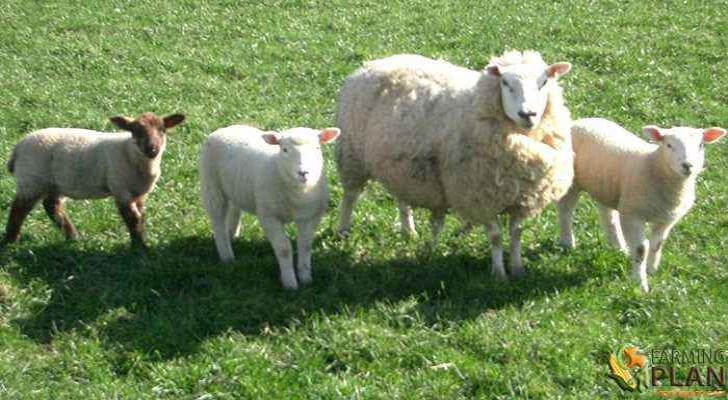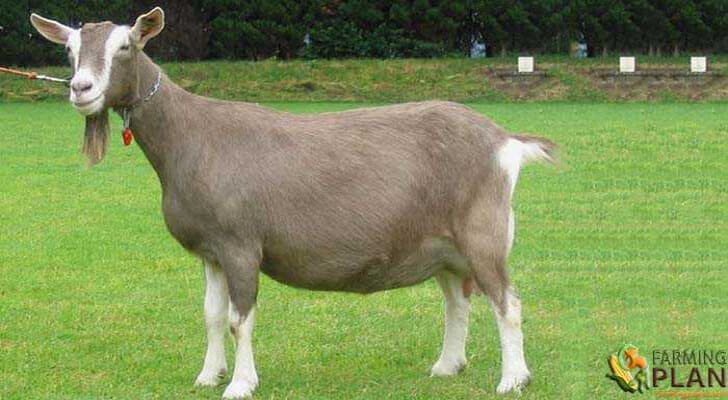Raising sheep is a fun and rewarding hobby for people who live on small farms or in rural homes with available pasture space. They are docile, gentle animals that serve many purposes such as providing meat, wool and even milk to their owners. For some families, they even become virtual pets!
Raising sheep has undoubted advantages in relation to other domestic species in important productive aspects. They are animals of easy handling, of docile character and gregarious behavior, adaptable to unfavorable ecological means. Raising sheep can produce different items of economic value, such as meat, milk, wool, hair, leather, skins, lanolin and fertilizers.

They can be used as load or draft animals to move water extraction pumps, grain threshers, etc. In the same way, they serve for the cleaning of areas dedicated to crops. And on the embankments and embankments of irrigation systems. And for the control of weeds in coffee plantations and fruit trees. Due to their condition as ruminants, they can feed on fibrous forages, existing in regions where agricultural crops are difficult to establish.
Facilities for Accommodation
The facilities in sheep will depend on several factors but mainly on the exploitation system used (intensive, extensive or semi-intensive) and the climatic conditions of the area.
Conditioning shed for sure in lactation
- They should be sheltered pens of strong winds, roofed, with concrete floor, with the slope of 2 to 3%
- Must have an area of 1.2 m2 / mother breeding
- The number of females per pen should not exceed 100 animals
Shed for sheep next to a delivery
- It must be a closed, protected from strong winds, roofing.
- The place a bed or floor of material that absorbs moisture (rice shell, sawdust, dry grass and other) 8 Sheep and Caprine Breeding
- Dimension 2 square meters per animal
Corrals for Folding
It is the place where the sheep stay between 3 and 6 months, they are generally open pens with feeders on the sides. The sheep need 15 to 20 cm of feeders per animal.
Fences
The use of fences is subject to the type of exploitation, in general, it is recommended to delimit the property or for divisions of paddocks. The fences can be plain wire or barbed wire, placed at a distance from each other in such a way that no small animals pass through them. For this, it is suggested separations of 7 to 8 cm. in the first 60 cm. up close, from the ground.
From then on the separation can be longer (15 cm.), the shelves can be made of metal or wood, place every 2 meters. The use of barbed wire fences is not recommended for the construction of pens. Since animals suffer injuries easily when trying to move from one pen to another or lying on the fence. The wounds produced by the barbed wire cause great losses in the herd mainly due to Infectious Diseases.
Feed
It is the key to the solution of many health problems, mainly parasitic. And therefore they can reduce economic losses due to treatments. The most practical and functional feeder is the one that consists of a grid, where the animals can only introduce the head.
This grid or can be made of wood or metal is nailed on the edge of a channel made with wood or blocks and cement. In such a way that the animals can touch the bottom of the animal with their mouths. This type of feeder can be used for the supply of hay, cutting grass, silage, concentrate, etc. In general, the objective that is pursued with the feeder is to ensure that the animals contaminate the food with feces and urine.
Shed Forsee
They are used to confine animals permanently or only at night. The fences must be good, to avoid leaks. Its height must be at least 120 cm. They can be the construction of wood, wire, stone and other rustic materials.
Drinkers
A drinker is easy to manufacture consists of longitudinally cutting a metal deposit (200 lots). Condition each half, support to avoid direct contact with the ground. And place in its proper place preventing the hours of the highest incidence of solar rays. Other types of sprue can be constructed with cement and blocks of a sheet, with channels of 45 centimeters wide, among others.
Salt
It is a type of feeder that is used to supply, common salt mixed with minerals. Raising sheep can be constructed of cement, brick, wood, plastic, or old rubber, placing them in a strategic location and protecting them with a roof to prevent them from getting wet when it rains. You may also like to read Southdown Sheep.
Nursing
It is recommended that there be individual cages on the farm to isolate the animal’s good protection against time. They should be easy to clean and disinfect.
Location and orientation of accommodation facilities
The accommodation should be built on easily accessible, elevated and well-drain soils. Also that they are well sheltered from strong winds and far from urban centers and industries. In closed buildings, it is recommended that the orientation of the longitudinal axis be east-west. In open pens, the orientation must be North-South.
Food
Feeding is mainly based on grazing, animals eat shrubs and weeds but prefer more tender and juicy grasses and legumes by raising sheep. Sheep can also be fed with preserved forages, such as hay, but they must get used to silage. They need to take, on average, two liters of water per kg of dry food consumed. Pregnant or lactating sheep have greater needs for water and food. You may also like to read Shetland Sheep.
Food Feeding
The young are suckled by the mother during the first part of their life. Care should be taken to ensure that newborns receive colostrum as quickly as possible. If your own mother dies or does not produce milk, you must be goddaughter to another sheep. You may also like to read Cheviot Sheep.
FAQ
What is meant by raising of sheep?
Raising sheep is the process of keeping, caring for, and breeding domestic sheep (a woolly ruminant animal) as livestock or for commercial profit. This form of agriculture has a long history dating back to 10,000 B.C across many cultures around the world. These days it is done mainly for meat production and wool production in certain parts of the world including New Zealand and Australia.
What is the best breed of sheep for beginners?
When it comes to choosing the best breed of sheep for beginners, there is no single answer that fits everyone. Factors such as climate, geography, and the goals of the farmer should all be considered when selecting a breed. With that said, some of the most popular breeds among beginner farmers are Dorper Sheep and Katahdin Sheep.
Is it hard raising sheep?
Raising sheep can be a rewarding but labor-intensive experience. Generally, you will need to take a few key steps to ensure your sheep’s health and wellbeing.
Conclusion
Now that you know about the benefits of raising sheep, why not give it a try? It’s easy to start out with just one or two animals and work your way up. Whether you want milk for your family, wool for knitting projects, meat on your plate or simply some cute farm pets to live in your backyard, there are many reasons to consider adding sheep to your farm. The guide should have given you enough information so that now all you need is good luck! If this post has inspired something new in the realm of small livestock farming then we’re happy to hear from you at any time.
As a reference: Wikipedia


